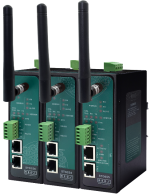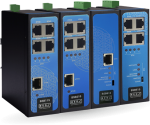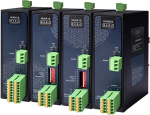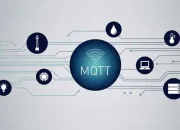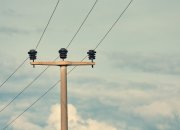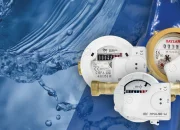1. Introduction
Bluetooth technology has been a cornerstone of wireless communication for years, allowing devices to connect and exchange data seamlessly. However, not all Bluetooth connections are the same. Two major versions of Bluetooth technology coexist today: Bluetooth Classic and Bluetooth Low Energy (BLE). While they share similarities, they are designed for different purposes. This text will explore the key differences between Bluetooth Classic and BLE, helping you understand which is more suitable for your specific use case.
2. What is Bluetooth Classic?
Bluetooth Classic, often just called "Bluetooth," is the original version of the Bluetooth specification. It has been widely used for years and is still prevalent in many devices. Here are some of its key characteristics:
- Data Transfer: Bluetooth Classic is designed for continuous streaming of data. It can handle higher data rates, making it ideal for use cases that require consistent data transmission, such as audio streaming or file transfers.
- Range: Typically, Bluetooth Classic devices have a range of about 10 meters (33 feet), although this can vary depending on the device and environment.
- Power Consumption: One of the main drawbacks of Bluetooth Classic is its relatively high power consumption, which can drain batteries quickly, especially during continuous data transfers.
- Applications: Bluetooth Classic is best known for being used in wireless headsets, speakers, car audio systems, and file transfer between devices. It is ideal for applications that need sustained connections and higher data rates.
In summary: Bluetooth Classic is designed for continuous, high-data-rate communication, making it perfect for applications that require streaming or sustained connections, like wireless audio.
3. What is Bluetooth Low Energy (BLE)?
Bluetooth Low Energy (BLE), sometimes referred to as Bluetooth Smart, was introduced as part of the Bluetooth 4.0 specification. BLE is a newer version of Bluetooth that focuses on reducing power consumption while maintaining robust connectivity. Here’s what makes BLE unique:
- Data Transfer: BLE is optimized for short bursts of data, rather than continuous streaming. It can transmit data quickly and then switch to a low-power sleep mode, which conserves battery life.
- Range: BLE’s range is similar to Bluetooth Classic, around 10 meters, but can sometimes be extended further depending on the specific application and device configuration.
- Power Consumption: The most significant advantage of BLE is its ultra-low power consumption. Devices can run for months or even years on a single battery charge, making it ideal for applications that need long-term connectivity without frequent charging.
- Applications: BLE is widely used in fitness trackers, smartwatches, medical devices, and smart home products. It is suitable for scenarios where devices need to send small amounts of data intermittently, such as sensor readings or status updates.
In summary: BLE is designed for low-power, intermittent data transfers, making it suitable for applications that prioritize battery life over continuous data streaming.
4. Key Differences Between Bluetooth Classic and BLE
| Feature | Bluetooth Classic | Bluetooth Low Energy (BLE) |
| Data Transfer | High, continuous data streaming | Low, intermittent data bursts |
| Power Consumption | Higher power consumption | Ultra-low power consumption |
| Range | ~10 meters (can vary) | ~10 meters (can vary, sometimes longer) |
| Connection Time | Longer connection setup | Fast connection setup |
| Ideal Use Cases | Audio streaming, file transfer | Wearables, sensors, smart home devices |
| Compatibility | Supported by older devices | Requires BLE-capable devices (Bluetooth 4.0+) |
| Cost | Slightly higher power management costs | Lower operating cost due to reduced power use |
5. How Do They Work Together?
One of the great things about Bluetooth technology is that Bluetooth Classic and BLE can coexist. Many modern devices are equipped with Dual-Mode Bluetooth, which means they can handle both Bluetooth Classic and BLE connections. This allows the same device, like a smartphone, to connect to a Bluetooth Classic headset for streaming music while simultaneously communicating with a BLE fitness tracker.
However, devices that only support one of these technologies (Classic or BLE) will not be able to communicate directly with the other. For example, a Bluetooth Classic-only headset won’t be able to connect to a BLE-only heart rate monitor.
6. Applications of Bluetooth Classic and BLE
Both Bluetooth Classic and BLE are essential in today's wireless ecosystem, but their applications differ based on their strengths:
- Bluetooth Classic Applications: Meter reading optical probe applications, wireless audio (headphones, speakers), in-car communication systems, file sharing, gaming controllers.
- BLE Applications: Meter reading optical probe applications, fitness trackers, heart rate monitors, beacons, smartwatches, smart home sensors, health monitors.

7. Conclusion
Bluetooth Classic and Bluetooth Low Energy (BLE) are two different versions of Bluetooth technology, each designed for specific needs. Bluetooth Classic excels at continuous data transfer, making it ideal for audio streaming and other applications that need sustained connectivity. In contrast, BLE is optimized for low-power, intermittent data transmission, making it perfect for devices that require long battery life, like wearables and sensors. REDZ – KMK Bluetooth Optical Probes support both Bluetooth Classic and Bluetooth Low Energy.
Understanding the differences between Bluetooth Classic and BLE is essential for choosing the right technology for your device or application. While Bluetooth Classic is still crucial for scenarios where high data rates are needed, BLE’s low power usage opens up new possibilities, especially for IoT devices that need to run for extended periods on limited power.



